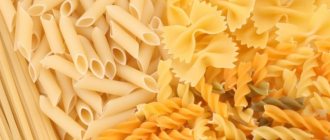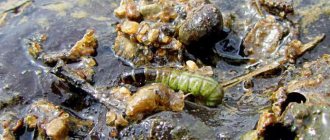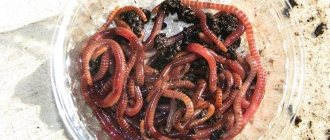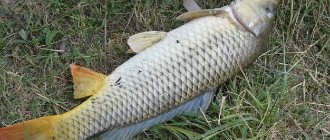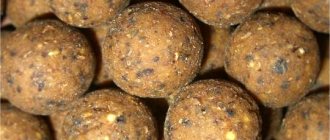Nikolay Linnik | September 13, 2021
Even housewives who are very far from fishing know that maggots are the most popular bait for catching non-predatory fish - they have to put up with the presence on the shelves of their refrigerators of boxes with nimble white worms, solemnly placed there by their husbands and sons. Over the past few decades, maggot has defeated its closest competitors - dung worms and steamed cereals, and has become a truly popular, all-weather and all-season bait. But “bait number 1” also has one big drawback.
Even with very careful storage, maggots quickly pupate in the warm season. Literally before our eyes, the frisky larvae turn into motionless barrels of light brown color, which soon darken. And what to do with them? Throwing away? In no case! Caster is an excellent bait for selectively targeting large white fish.
Large bream, tench and especially caster roaches are very popular. But the little things, on the contrary, avoid pupated maggots. But that is not all. Casters are very good as an additive to groundbait. And if I want my bait to interest large fish, I make sure to generously flavor it with casters.
Fishing with a caster hook is most effective in the first half of autumn. The fish's appetite is still quite good, but, having had enough of all kinds of food over the summer, it is already beginning to be picky. In this case, baits, which almost no one remembers in the summer, are very helpful. One of these baits is caster, and in September I really like to catch big fish with it.
Four ages of princess
The life of casters is even more fleeting than that of maggots. The process of transition from larva to fly can be divided into 4 stages (photo 1) . And if proper measures are not taken to slow down their development, casters turn into a dark brown pupa in just a few hours (photo 2) . And the dark pupa is heavily filled with air - and therefore floats in the water. And its shell becomes very fragile.
So overripe pupae are only suitable for bait. And even then in a crushed form. Only cream and light brown colored pupae are suitable for hook baiting (photo 3) , so they drown in the water. These contain the highest content of substances attractive to fish, and the shell is still elastic enough to withstand the bite of fish.
Now I buy the number of casters I need at a fishing store. They are sold in vacuum packaging and have a fairly long shelf life - up to two weeks when sealed. A half-liter package of pupae is enough for both bait and bait.
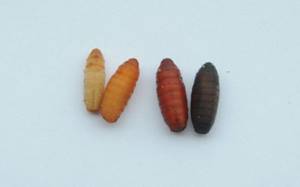
The technology for preparing casters at home is simple, but quite time-consuming. Maggots intended for pupation are passed through a 3-mm sieve several times a day and the larvae that have stopped moving are selected. To slow down their further development, young pupae are placed in a refrigerator in a container of water. The water needs to be changed every day, otherwise the pupae will spoil. By the way, casters are stored in the same way when fishing. If you do not fill them with water, in the open air, within an hour after opening the package, almost all pupae turn dark brown.
How to determine the quality of casters
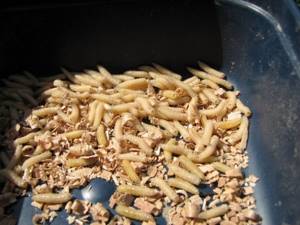
It is very easy to determine the quality of a pupa; just smell it. At the same time, even one bait can spoil the smell, so you have to choose. Take 10 dolls, place them on a clean cloth, lightly crush them and smell each one. If the smell is normal, all the pupae can be used. If not, you'll have to smell each one, determine which one is bad, and remove it.
It is important that all casters are in the water in sunny weather, otherwise they will develop quickly. It is also not advisable to immediately make feeding balls. First, one ball is made, used, and then you can start producing the next one.
If after fishing you have extra pupae left in the water, do not throw them away. Simply dry, wrap in toilet paper and put back in the refrigerator. They will have to be used within a maximum of 2 days. These dolls should not be used with fresh ones from the package. Important! Since casters often fly off the hook, it is better to use 2 pieces at once to be on the safe side.
So, casters are an excellent bait and groundbait for large fish. You can grow them with your own hands at home. The best option for using pupae is for carp fish.
Fishing conditions

When fishing with casters, I achieved the best results in lakes and oxbow lakes with a depth of 1.5 - 2.5 m. The reason here is simple. When feeding in bulk by hand at great depths, it can be very difficult to create food competition among fish. In pursuit of drowning pupae, the fish are distributed in different depth horizons and cease to compete for food. Bottom topography also plays a role in achieving success.
As with fishing with steamed grains, for fishing with casters it is better to choose areas of the reservoir with a relatively flat bottom. If you fish on a slope, there is a high risk that, following the falling casters, the fish will roll down to a depth inaccessible to the tackle.
Caster in feeder fishing
Caster can be classified as a little-known bait for feeder fishing. At a time when caster is actively exploited over the hill, we still have many fishermen who can be surprised by this overseas word. So, what is caster and what is it eaten with, I will try to explain in this post.
Caster is one of the developmental stages in the life of a maggot. It occurs during pupation, then the fly appears. If maggots are stored incorrectly, the pupation stage occurs faster. In this state, it is unusual to use living creatures as bait. It is recommended to add pupated maggots to bait. Fish are very attracted to the smell of caster husks. In addition, the husk has good buoyancy, thus it will be an excellent leavening agent for feeder bait. Buying this bait from us is quite problematic. Therefore, casters are prepared at home. There are many recipes on the Internet on how to quickly turn maggots into casters, and how to store them correctly.
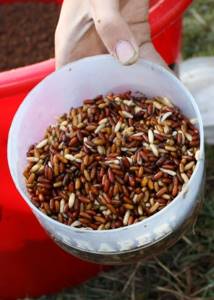
When fishing with a caster, you should make 4-5 frequent casts, with casters hammered into the feeder. It takes a lot of time for the fish to get acquainted with the bait and taste it. Caster fishing is quite common in England, and the British use this bait to catch large bream. This also applies to all white fish.
It has been noted that the properties of caster depend on its age. Recently pupated casters have a large amount of protein, have a yellow-golden hue, and sink instantly. The older the caster, the less protein it contains. The caster becomes more buoyant. Dark brown casters have the best buoyancy. Abroad, such bait is sold in bags of water. The pupation process is suspended due to lack of air. It is stored in this form for about 1.5 weeks.
Tackle
You can fish with casters with a light feeder, but a float rod will certainly give better results. The reason is that this unusual bait requires not only delicate presentation, but also constant feeding in small doses with clean pupae. It’s most convenient to do this by hand, so when fishing for pupated maggots, I don’t use fly rods longer than seven meters.
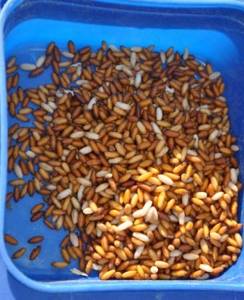
At long distances, especially in windy weather, hand-thrown casters scatter over a large area and “smear” feeding fish. It’s good if the rod is equipped with a monolithic flexible tip of the “whalebone” type. This rod design allows me to use the thinnest rigs.
What is caster?
Before turning into a fly, the maggot turns into an intermediate stage - a dark pupa, with a thin chitinous cocoon, inside of which there is soft content. This form is called caster and is well known to float anglers and feeder fishermen. Caster is widely used both as bait and as an additive to groundbait when fishing for various types of whitefish. Moreover, the situation sometimes develops in an extremely interesting way - when only small fish take the maggot, confident bites of large roach, bream and bream occur on the caster.

However, not all casters are equally useful! Just like yoghurts! The thing is that along the way of transformation from a maggot to a fly, the caster also changes its physical state, turning from a soft white pupa into a black, dry and shrunken “grain”. It is from the latter that the young fly subsequently flies out. And it is precisely these “crackers” that are not suitable for fishing - they are not only very tender and are easily torn off the hook by fish, but also have positive buoyancy.
In a word, it is not enough to simply wait for the maggot to pupate; you need to stop the process at a certain stage. The correct caster, suitable for use as bait and a component for groundbait, has a dense, elastic body, a color from soft cream to light brown, and its buoyancy is necessarily negative. This is how this larva appears at the very beginning of the pupation process, and at this stage the metamorphosis must be stopped. The easiest way is to deprive the pupa of oxygen, place it in cold water and keep it until the very moment of fishing.
When “growing” such a caster, it is necessary to carefully control the pupation process and not skip the pupation process. For this purpose, the larvae that have begun to transform should be lowered into water at certain intervals and those that will drown should be selected.
Equipment
When fishing with casters, it is very important to follow certain rules for presenting bait. Here (almost like when fishing with steamed cereals) to achieve the best result, the bait on the hook should be lowered, surrounded by bait freely falling in the water. That’s why I choose equipment such as for fishing with steamed grains.
The basis of my rigs are floats with a spindle-shaped body with a carrying capacity of 1.25 - 1.5 g (photo 4) . I choose lighter floats when I fish in a calm or with the wind blowing at my back, and with heavy floats I fish in a side or head wind. The antenna of the float must be thin - no thicker than 1.25 mm. With a thicker antenna, you may not see even half of the cautious bites.
The loading scheme is a chain of sinkers of decreasing weight. The optimal number of weights is 5 - 7 pieces (photo 5) . Of course, the float loading scheme in the English style - the “buttons on a shirt” type (when 7 - 8 sinkers of the same mass are attached to the fishing line at equal intervals) - allows for a more believable presentation of the bait. But it is good for plug rods, but when working with a fly rod, equipment built according to this scheme often gets confused when casting. Especially if you have to swing a lot because of the wind.
The leash must be thin and not very long. The length of the leashes on my fishing rods ranges from 10 to 15 cm. And their diameter is 0.085 mm. If you have a monolithic tip on the rod and some dexterity when fishing for fish, the power of the line on the leash is quite enough to fish for fish weighing 0.3 - 0.5 kg. And only in the most exceptional cases, when bream or tench are expected in the trophies, do I use a leash with a diameter of 0.108 mm (photo 6) .
For caster fishing you need reliable hooks of the smallest size. Most often I use hooks No. 18 - 20 made of wire with a cross section of 0.32 - 0.35 mm. Such small hooks have little mass, so the caster applied to them (photo 7) behaves very naturally in the water.
Feeding
As noted above, when fishing with casters, the most effective way to feed fish is to regularly throw small portions of bait to the float. But there are times when there is a weak current in the reservoir, and in order to maintain the compactness of the feeding “spot”, it is necessary to use additional weights. The simplest option is to mix casters with a small amount of soil.
However, in cases where there is a desire to hunt with a caster for large bream or tench, I mix the pupae with Super Black bait (see photo 4). The presence of a plant component in the bait will collect small things at the fishing point. And its fuss at the “spot” will attract large fish to the bait. When fishing for bream, it is very good to add a certain amount of bloodworms to the bait with casters (photo

The standard scheme for feeding fish to casters looks something like this. At the very beginning of fishing, I throw 3 - 5 balls of vegetable bait stuffed with casters at the fishing point. This is a landmark that the fish will subsequently focus on. Then, during the fishing process, I regularly throw 5-10 pupae to the float and carefully observe the behavior of the fish.
If bites occur in the upper layers of water, which happens quite often on sunny days, I switch to feeding with casters mixed with a small amount of loam. My goal is to try to get the fish closer to the bottom. If I don’t succeed, I pick up a fishing rod set up to catch fish in the middle layers of water.
Custer
The caster represents the next stage of the maggot's life, which occurs during pupation, from which the fly then emerges. Often, due to improper storage of maggots, their pupation occurs earlier than the desired date. Can it be used in this form or not? Firstly, the pupa is a living organism, and organic biological processes occur in it. Therefore, we can immediately say that such a caster can be added to bait. It only benefits from this, since new large factions will appear in its composition. Since life processes occur inside the pupa, fish with a sense of smell are able to distinguish them. Therefore, she will be in the feeding area, attracted by such a smell. This smell is especially produced by caster husks; they have good buoyancy, and therefore are an excellent tool for loosening bait.
Caster attachment on hook
This bait or bait additive is not commercially available, but its use is often mentioned, especially on the Internet or in many other publications. Therefore, after searching the Internet, the following recipe for ripening casters was found:
– If you have maggots left over from a previous fishing trip, then we pass it through a fine sieve, sifting out the dead maggots.
– We fill the sifted maggot with slightly moistened sawdust and store it in the refrigerator, and 3-4 days before fishing, when we need casters, we take out the box with maggot from the refrigerator to continue storing at room temperature.
– Before this, we sift again, remove the dead maggots and leave them warm to form casters.
– As soon as light brown or golden casters begin to form, we sift them and select the ready ones, leaving the rest to ripen further. We repeat this procedure every four hours, as casters can quickly turn black. Such casters dry out, float up and become unsuitable for bait.
– We wash the finished casters and put them in a plastic bag, placing them in the refrigerator, where we store them until fishing. At this temperature, the development of pupae slows down greatly, and they remain the desired color. We continue to monitor and moisten the sawdust. Casters can remain in this state for a whole week.
Caster and maggot for fishing
It is best to fish with caster in combination with maggot, placing it last on the hook, getting something like a sandwich. When fishing, be sure to use it as an additive to bait for feeder fishing, although some anglers do not add it. But for this, the fish must be familiar with this bait. If the fish gets used to this bait, you will notice that the size of the fish caught will increase. This combination is especially successful when fishing for bream and large bream.
In the West, where the fish are better accustomed to this bait, competitions are often held on the number of fish caught using maggot and caster in order to determine the best result. Maggots always begin to show faster results in fishing, as the larvae move seductively. But this happens when they are not injured when baited on a hook, and they do not leak out. The advantage of fixed casters is their buoyancy and with the slightest movement they rise up along with the hook. They are more visible in the water than maggots, and when fishing for more wary fish this can make or break your fishing success. The caster is attached in the classic way - by the thick end of the pupa. It has been noticed that bream swallows caster more deeply than maggot. This indicates that the bream bite on the caster is more confident. This conclusion suggests that you can and should experiment with baits when fishing. Below is a table comparing the two attachments
MaggotsCasters
– Since many fishermen use maggots in bait, the fish have become more accustomed to this bait.
– Nimble maggots move more seductively on the hook and lure fish.
– When fishing on a muddy bottom, maggots can burrow into it.
– Cautious fish are caught less unreliably when hooked, and that’s why runs sometimes happen. – Casters will never burrow into soft soil.
– Since the caster is light, it balances the mass of the hook. If the fish bites cautiously, then casters are preferable.
– Fresh casters are not held securely on the hook and can fly off when casting.
– It takes the fish more time to get used to a given bait, even if they are familiar with a given bait.
Custer
In the case of using casters, it is necessary to make 4-5 casts to the fishing point, adding a dozen casters to the feeder with each cast when fishing on the feeder. It takes the fish much longer to taste the bait and get a taste for it.
The British quite often use caster and maggot for fishing and therefore believe that as bait, maggot is better for catching a lot of small things, and caster for catching “large fish”. This applies to all types of white fish. They also noticed that depending on the aging of the caster, its properties change. Newly pupated caster has a more yellow-golden hue, sinks quickly and is rich in protein. Its difference from maggot is that it has a hard shell and does not move. The “older” the caster, the less protein it has inside and the better its buoyancy. Dark brown maggots are the most buoyant and the oldest.
Branded casters are sold abroad in bags of water. Because of this, the pupation process is suspended, since the caster cannot take in air. This caster can be stored in water for no more than one and a half weeks.
Find the rhythm
In cases where feeding fish is carried out with a bait in its pure form by hand, it is very important to find the correct rhythm of feeding the bait. Some anglers make one serious mistake: they try to fish too quickly. However, their colleagues who have found the right fishing rhythm manage to catch more fish. The reason is elementary. With intensive feeding in bulk from the hand, the rhythm of bites immediately really increases. Then the fish, getting excited, is distributed throughout the entire thickness of the water - and the school seems to be “smeared”.
The bait ceases to perform one of its most important functions - to cause excitement and competition for food in the feeding fish. As soon as the intensity of the bites begins to decrease, I throw 30 - 40 pupae into the water and make sure to pause in feeding. At the same time, I switch to fishing with two casters on the hook and begin to bait the bait at the very bottom.
Very often, the reason why roaches stop biting is the appearance of a larger fish of a different species at the feeding point. And a pleasant bonus in the form of catching bream or tench will only add excitement to fishing.
Have fun fishing!
